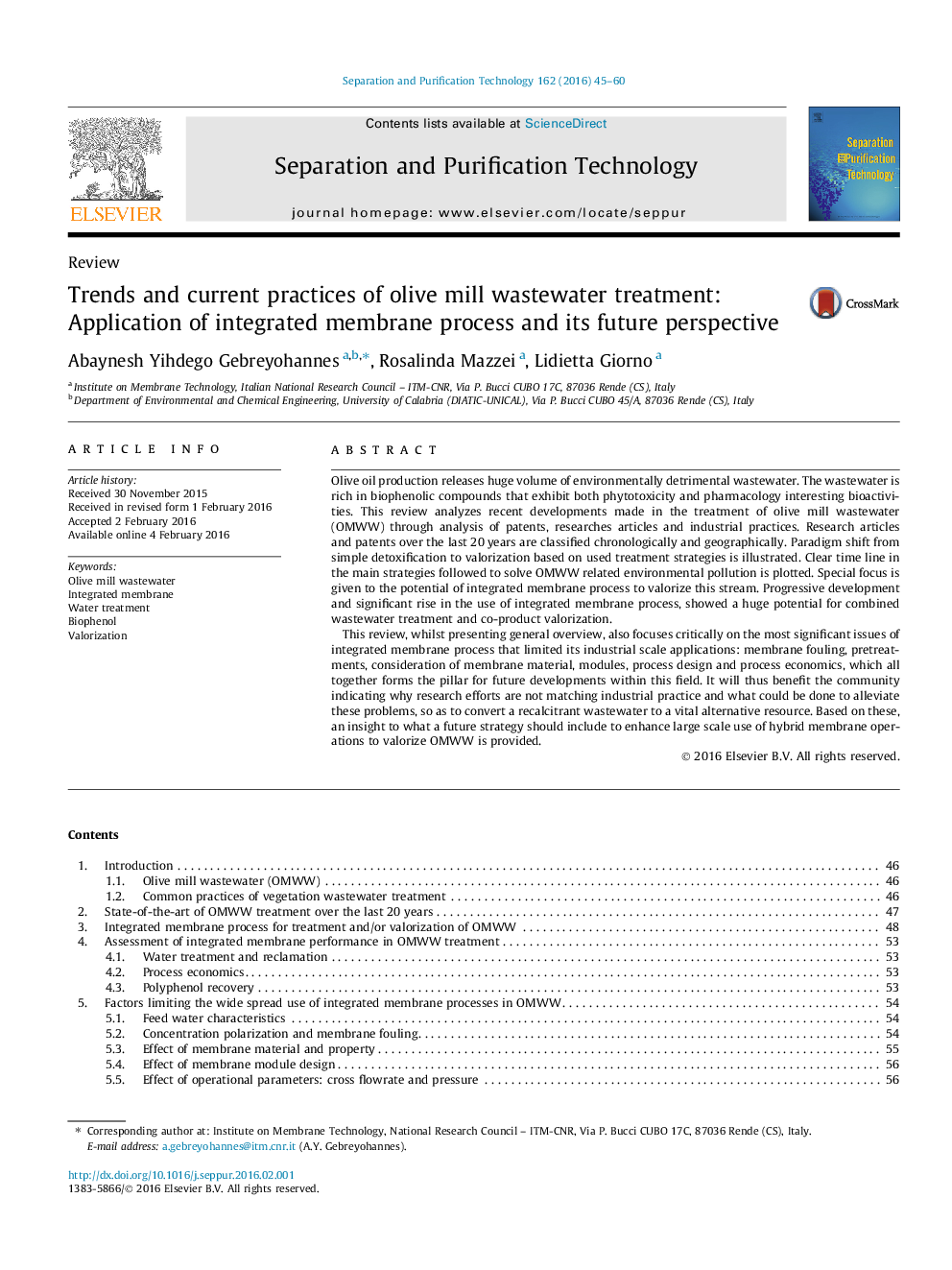| Article ID | Journal | Published Year | Pages | File Type |
|---|---|---|---|---|
| 639938 | Separation and Purification Technology | 2016 | 16 Pages |
•Trend of olive mill wastewater treatment over the last 20 years is investigated.•Research articles, patents and industrial practices have been analyzed in detail.•Potential of integrated membrane process to valorize olive mill wastewater is identified.•Discussed various points that limited application of integrated membrane process.•What should be the focus of future direction to address these limitations are highlighted.
Olive oil production releases huge volume of environmentally detrimental wastewater. The wastewater is rich in biophenolic compounds that exhibit both phytotoxicity and pharmacology interesting bioactivities. This review analyzes recent developments made in the treatment of olive mill wastewater (OMWW) through analysis of patents, researches articles and industrial practices. Research articles and patents over the last 20 years are classified chronologically and geographically. Paradigm shift from simple detoxification to valorization based on used treatment strategies is illustrated. Clear time line in the main strategies followed to solve OMWW related environmental pollution is plotted. Special focus is given to the potential of integrated membrane process to valorize this stream. Progressive development and significant rise in the use of integrated membrane process, showed a huge potential for combined wastewater treatment and co-product valorization.This review, whilst presenting general overview, also focuses critically on the most significant issues of integrated membrane process that limited its industrial scale applications: membrane fouling, pretreatments, consideration of membrane material, modules, process design and process economics, which all together forms the pillar for future developments within this field. It will thus benefit the community indicating why research efforts are not matching industrial practice and what could be done to alleviate these problems, so as to convert a recalcitrant wastewater to a vital alternative resource. Based on these, an insight to what a future strategy should include to enhance large scale use of hybrid membrane operations to valorize OMWW is provided.
Graphical abstractFigure optionsDownload full-size imageDownload as PowerPoint slide
